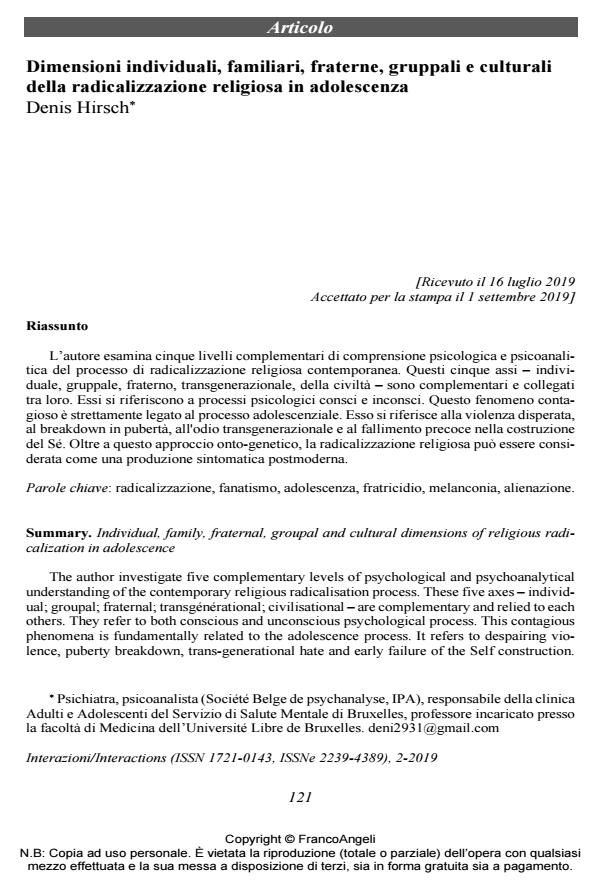Individual, family, fraternal, groupal and cultural dimensions of religious radicalization in adolescence
Journal title INTERAZIONI
Author/s Denis Hirsch
Publishing Year 2019 Issue 2019/2
Language Italian Pages 17 P. 121-137 File size 210 KB
DOI 10.3280/INT2019-002008
DOI is like a bar code for intellectual property: to have more infomation
click here
Below, you can see the article first page
If you want to buy this article in PDF format, you can do it, following the instructions to buy download credits

FrancoAngeli is member of Publishers International Linking Association, Inc (PILA), a not-for-profit association which run the CrossRef service enabling links to and from online scholarly content.
The author investigate five complementary levels of psychological and psychoanalytical understanding of the contemporary religious radicalisation process. These five axes ‒ individ-ual; groupal; fraternal; transgénérational; civilisational ‒ are complementary and relied to each others. They refer to both conscious and unconscious psychological process. This contagious phenomena is fundamentally related to the adolescence process. It refers to despairing vio-lence, puberty breakdown, trans-generational hate and early failure of the Self construction. Beside this onto-genetic approach, religious radicalisation may be considered as a symptomatic post-modern production.
Keywords: Radicalization, fanatism, adolescence, fratricide, melancholy, alienation.
Denis Hirsch, Dimensioni individuali, familiari, fraterne, gruppali e culturali della radicalizzazione religiosa in adolescenza in "INTERAZIONI" 2/2019, pp 121-137, DOI: 10.3280/INT2019-002008